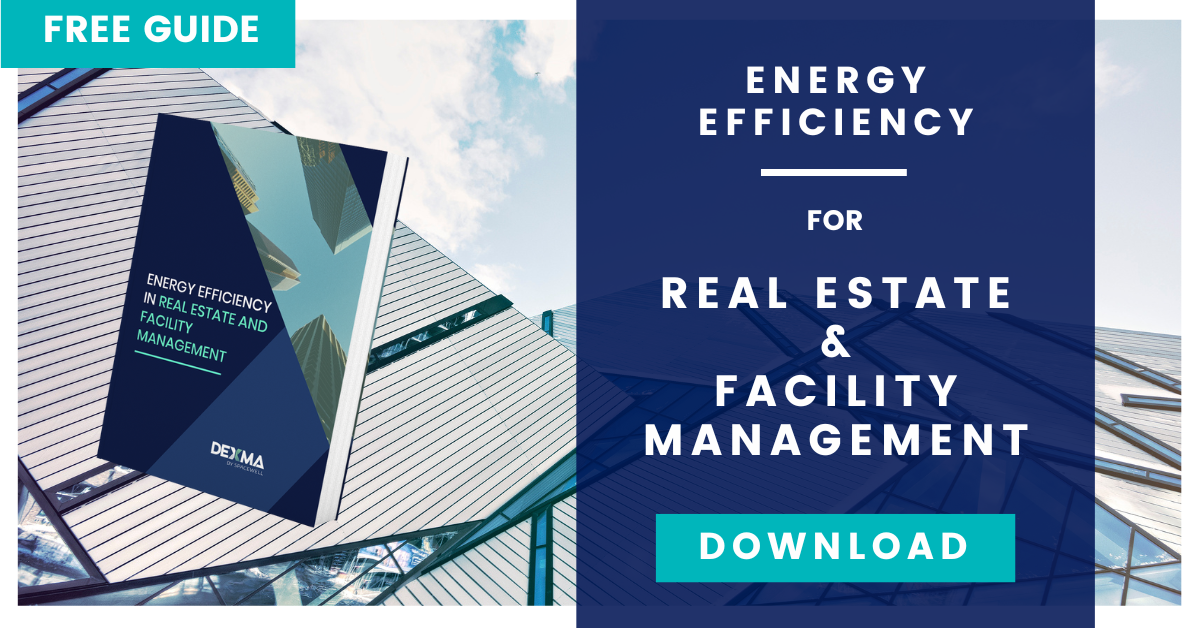Carrying out a predictive maintenance plan is a smart way to avoid future costs, you know that. And in order to do this, you will need predictive maintenance software and a plan. But what are the most common mistakes made in a maintenance programme of this type? Here is a list of the 6 most common errors made by building managers and/or facility managers.
What is a Predictive Maintenance Plan?
The current trend in facilities management is to move towards sustainability. To this end, we work with building automated systems (BAS) and implement strategies and dedicated software for both preventive and predictive maintenance.
The latter, you will use as maintenance technicians to facilitate the path and management of the Maintenance Plan that you have established. For example, when technicians talk about “the maintenance range” they refer to the “physical” planning of daily maintenance work (what, how, when and where maintenance tasks will be carried out).
In a maintenance range, you will have defined the components of Maintainability, Conservation, and Reliability, as well as the definition of the management roles of each of the different organisational strata and employees, to ensure compliance. All this will be part of your maintenance plan.
This pre-planning will help develop the programme with calendar-based frequencies or the use of equipment to perform activities that are considered important for maintenance.
Here is an example of scheduled tasks:
- Monday: Check consumption of capacitor banks.
- Tuesday: Cleaning of filters in Fan-Coil.
- Wednesday:…
Having a preventative maintenance plan in place can extend the lifespan of your expensive equipment, helping to prevent future failures. And within preventive maintenance, there is a more advanced variant, known as predictive maintenance. The latter consists of analysing and monitoring the state of your facilities in order to detect future deficiencies and make maintenance recommendations.
Whatever type of planning you are going to carry out, you will work with a maintenance management program, as I said at the beginning. These software tools are known as CMMS (Computerised Maintenance Management System).
If you are the facility manager or responsible for a facility, and you are thinking of implementing a predictive maintenance plan, it would be good for you to know the main mistakes that can be made in a predictive maintenance programme, and learn how to avoid them.
Error #1: Obsolete Technologies
Innovative technologies such as IoT (Internet of Things), also known as Industry 4.0., are still not used enough because of the lack of knowledge in this sector.
This type of technology can provide information based on data, which will provide great benefits to your maintenance plan with the help, for example, of maintenance management software (CMMS).
Another type of software that will be of great help to you and that facility managers frequently forget is the EMS (Energy Management Software) such as the DEXMA Platform.
Generally, maintenance professionals who apply the predictive maintenance methodology do not realise that combining both management software will help them achieve objectives more easily. In addition, they will improve the energy savings of your buildings through proper energy management. In this article, you can learn more about the integration between a CMMS and a BMS. Although focused on retail, the example can be applied to other sectors.
Be aware that proper energy management will help you detect deficiencies in your facilities.
For instance, suppose you are reviewing the energy consumption data of your facilities in your EMS, where consumption is monitored and analysed in an advanced way. Here you can create alarms that detect, for example, peaks in consumption, which will inform you that there is still abnormal behaviour in some of your machines, climate systems, electrical installations, etc.
Congratulations! You have most likely detected a deficiency in time and will be able to fix it before the installation eventually fails. But these technologies are pointless if you don’t fully implement them and use them regularly.
Error #2: Getting ahead of Predictive Maintenance
Traditional facility management aims to anticipate objectives, but if a predictive maintenance programme is carried out, it must follow its intended course in order to be effective.
Anticipating scheduled reviews of your predictive maintenance programme and performing planned maintenance ahead of time will result in programme deviations and potential problems.
Error #3: Improper Roles of CMMS and EMS Users
As a facility manager, you will use a CMMS to control and manage the maintenance of the facilities.
It is very important that you correctly define the roles of each user in your predictive maintenance programme, and that you give access to each user in your CMMS. If you don’t do it, there will be problems in the compliance of the programming. In addition, you will prevent unauthorised personnel from performing maintenance tasks outside their area of competence.
These roles should also be defined in energy management tasks.
For example, in an advanced energy management solution such as the DEXMA Platform, you can create an unlimited number of users. The platform also allows you to quickly invite users belonging to other accounts external to yours, in this article on user management in the DEXMA Platform we explain how to do it.
Error #4: Poor Instructions Increase Risk
Predictive maintenance instructions should be specific to each part of the installation. Poorly detailed instructions will result in errors and improper maintenance activities.
Design specific instructions for each role in your predictive maintenance plan. Don’t forget to specify what tasks will be managed in the CMMS, who will do it, and what basic guidelines you should follow.
In the case of users who, in addition to working with your CMMS, use an EMS you can for example:
- Provide them with the energy consumption KPIs they should monitor and analyse, in order to implement the established predictive maintenance programme.
- Define reference criteria or benchmarks so that each user sets up alarms in the EMS to help detect anomalies.
- Create a specific template for energy management reports related to the predictive maintenance programme. In DEXMA, for example, there is a dedicated option for creating custom reports.
Error #5: Your Software Solution Captures Erroneous Data
Both your maintenance management software (CMMS) and your energy management solution (EMS) should correctly capture the data. But sometimes errors can occur, resulting in the poor quality of the data you are collecting.
What if my data has poor quality or is erroneous?
This data could lead you to make incorrect assumptions about the state of your facilities. For example, limiting the data to the category and type of equipment, to unique identifiers for the equipment, or to the key parts needed for predictive maintenance.
This could lead you to make the wrong decisions. If you want more information on the importance of data quality, this article on Big Data and Macro data may be of interest to you.
Error #6: Over-Complication Reduces Efficiency
Make a simple, easy-to-understand, easy-to-follow predictive maintenance plan. This will reduce the risk of confusion and poorly performed maintenance activities. In addition, it will be much easier for you to set up your predictive maintenance software.
Use SMART objectives to define and develop the maintenance programme:
- Specific
- Measurable
- Assignable
- Realistic
- Time-bound
In this article, you will find an example of the application of SMART criteria in energy management. This will also help you define the energy management plan that will complement the predictive maintenance.
After reviewing these top mistakes in facility maintenance management, you may have already considered areas where you need to improve. If you haven’t made any of these mistakes, congratulations!
This is a reminder that if you want to certify that your processes have a high level of quality and low risk, you can obtain an international certification such as ISO 9001. An ISO 9001 certified company is a company whose quality management system has been inspected and complies with international standards. In this article on ISO certifications, you can learn more about them and identify which one is the best fit for your organisation.
If you need help implementing an EMS or to get more out of it, do not hesitate to contact us.




